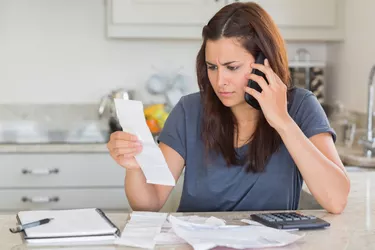
A money order can be a convenient method of making or receiving a payment. Unfortunately, this convenience attracts fraudsters who try to copy and send them to innocent people. Money order scams are common with email solicitations and can victimize those who use websites like Craigslist to sell items to strangers. The USPS, various banks and private companies issue their own money orders. Each has specific features to help with identification but you can apply some general tips to all types to determine authenticity.
Hidden Watermark
Video of the Day
Money order issuers often embed watermark images in them that are difficult for fraudsters to duplicate. For instance, USPS uses an image of Ben Franklin and MoneyGram uses a pattern created with its brand name. These images are visible only when you hold the money order in a particular way. Hold the USPS money order up to the light and the MoneyGram money order at an angle or on a flat surface to see their watermarks. A money order is probably fake if the watermark is not hidden.
Video of the Day
Amount on the Money Order
Issuers have a limit on the amount of money for which you can purchase a money order. The maximum for most is $1,000 for domestic use. The USPS also has limits for international money orders: $700 per money to every country except El Salvador and Guyana, which have a limit of $500. Amounts in excess of these figures, like $3,000, indicate a fake money order.
General Appearance
Examine the money order for any irregularities that could indicate it is not genuine. This would be easier if you have received a money order by the same issuer in the past. For instance, the ink colors might look lighter or darker than you are used to, or the paper may have a different texture or feel thicker or thinner than normal. Also, the printing for the amount may look discolored, a sign that the sender erased the original figure, according to the USPS. You might notice missing features, or that other features look different than usual.
Call to Verify
Call the issuing company if you still are unsure of the authenticity of the money order. The representative can check the database for the serial number on the document and provide additional tips for determining authenticity in the future. If the money order is fake, the number on the money order would not be legitimate.Confirm the company's number from a different source, such as its Internet homepage. Contact numbers for issuers of commonly-used money orders are: USPS (1-866-459-7822), Western Union (1-800-999-9660) and MoneyGram (1-800-MONEYGRAM).